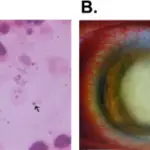Glaucoma is an abnormal condition of increased intraocular pressure that may progress to vision loss.
Glaucoma is characterized by visual field changes and cup of the optic nerve.
The types of glaucoma include:
- Angle-closure glaucoma
- Open-angle glaucoma
- Primary open-angle glaucoma
- Secondary open-angle glaucoma
- Ghost cell glaucoma
- Pigmentary glaucoma
- Melanocytic glaucoma
- Neovascular glaucoma.
What is the Pathology of Glaucoma?
The pathology of glaucoma is poorly understood but may include all that causes increase in the intraocular pressure.
How does Glaucoma Present?
Glaucoma presents with subtle findings that may be asymptomatic and patients may experience distortion vision, peripheral vision loss, and blurred vision.
How is Glaucoma Diagnosed?
Glaucoma is diagnosed by fundoscopic examination, tonometry, gonioscopy, and visual field testing.
How is Glaucoma Treated?
Glaucoma is treated with beta-blocker, prostaglandin, latanoprost, and trabeculoplasty.
What is the Prognosis of Glaucoma?
The prognosis of glaucoma is good for most patients with adequate treatment. Glaucoma may lead to permanent vision loss if not treated.



